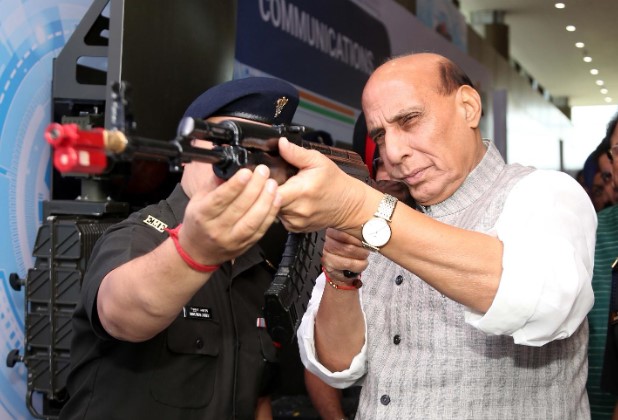Defence Minister Rajnath Singh reviewed an equipment display focusing on niche technology, innovation, solutions for surveillance, Artificial Intelligence, Training, Robotics, Virtual Reality, and Operational Logistics at the ongoing Army Commanders’ conference in the capital on Wednesday. Indian Army displayed a wide array of innovations undertaken by soldiers at its various establishments – technical educational, and operational. The displays included radios, UAVs, software tools, equipment for observing and correcting Artillery fire and the like. There was equipment to aid command and control of elements in battle, ferrying loads up the hills, Kamikaze drones, loitering munition, quadcopters that can release missiles, and other aids for battles primarily at the tactical levels.
Inquiring about such a spurt in innovations in the forces and even prototypes being produced in such a short span, the ADG, Army Design Bureau, revealed that the whole process was really accelerated when the Army put out its problem statements. In addition, necessary financial and technical support was organised by the Army Design Bureau (ADB). The ADB also assisted in establishing contacts with academia and R&D establishments.
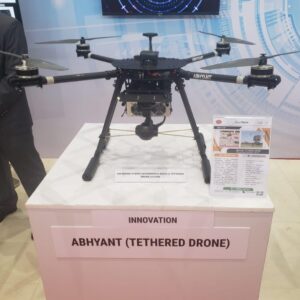
Amidst the array of equipment vying for attention was the Abhyant Tethered Drone. It is an indigenised surveillance tethered drone system. The drone can remain airborne for a long duration at altitudes of 100 meters. Secured data communication is assured while the requirement of a tether capable is avoided. It is portable and can be mounted on light vehicles. The low cost of manufacturing allows induction in greater numbers. It is excellent equipment for tactical commanders at battalion and brigade levels and can aid in building battlefield transparency.
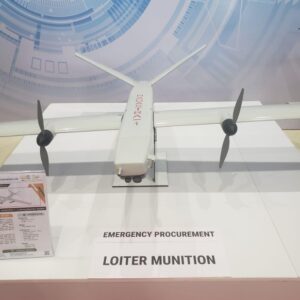
In the loitering ammunition class was Nagastra 1. The drone is designed for employment in reconnaissance, detection, and attack missions. The detection elements include EO/IR cameras, depending on mission requirements. The all-up weight of the equipment is 8 kg. Nagastra has an endurance of 60 minutes and a range of 150 km. The circular error of probability is barely 3 meters. The warhead weighs approximately 1 kg.
In the family of drones was the ULPGM. It has been designed to operate in high-altitude areas. The drone can fly up to 10-15 km. The target gets locked in a seeker video before releasing the weapon. The point of aim can be altered even after release.
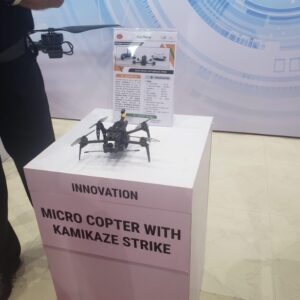
Accurate Micro drone Kamikaze strikes are very useful, especially in an insurgency environment. Microdrones with an endurance of 30 minutes were displayed. These drones can operate effectively in GPS-denied environments. The drone has AI-based capability to differentiate between unarmed human beings and those with weapons.
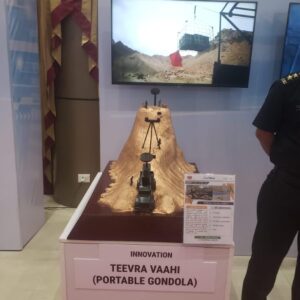
A portable gondola for carrying loads upslope –Teevra Vaahi– was on display. It would certainly be a blessing for troops operating in mountainous terrain. Teevra Vaahi can be used for carrying loads down the slope, also.
Equipment to improve the accuracy of Artillery fire was also on display. Gunners have all along been trying to optimise the effectiveness of the first salvo. The maximum destruction at the target end, including casualties occurring, is caused by the first salvo if it lands accurately. The aids on display for Artillery observation post officers would have a definitive effect on fire effectiveness by making the acquisition process of targets more accurately.
The measures undertaken by the armed forces have definitely spurred the spirit of innovation in its rank and file. An enabling environment with financial assistance access to R&D facilities has provided the incentive required for pursuing projects within the organisation.
Brig SK Chatterji (Retd), Editor Bharatshakti.in




